
The Cornmill Stream is a minor tributary of the River Lea in the English county of Essex.
Contents


The Cornmill Stream is a minor tributary of the River Lea in the English county of Essex.

The stream is an artificial watercourse which may have been built by 1086 to serve the mills mentioned in the Domesday Book at Waltham Abbey. [1] [2]

After leaving the River Lee Flood Relief Channel (Horsemill Stream) at Fishers Green the stream flows south to form the western boundary with the former Waltham Abbey Royal Gunpowder Mills before flowing through the Waltham Abbey SSSI within the Gunpowder Mills property. Above Waltham Abbey the stream diverges from the Old River Lea [3] with both channels bordering the Cornmill Stream and Old River Lea, SSSI. The stream passes under the 14th-century Harold's Bridge and the B194 road (Abbey View) before flowing through a sluice in the abbey's grounds. The stream flows underground to emerge adjacent to Waltham Abbey town hall. After flowing through an urban area, it rejoins the River Lee Flood Relief Channel beyond the town of Waltham Abbey. Coordinates: 51°41′23″N0°00′07″W / 51.689663°N 0.001856°W
| Wikimedia Commons has media related to Cornmill Stream . |
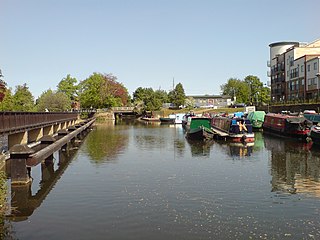
The River Lea is in South East England. It originates in Bedfordshire, in the Chiltern Hills, and flows southeast through Hertfordshire, along the Essex border and into Greater London, to meet the River Thames at Bow Creek. It is one of the largest rivers in London and the easternmost major tributary of the Thames.

The Lee Navigation is a canalised river incorporating the River Lea. It flows from Hertford Castle Weir to the River Thames at Bow Creek; its first lock is Hertford Lock and its last Bow Locks.
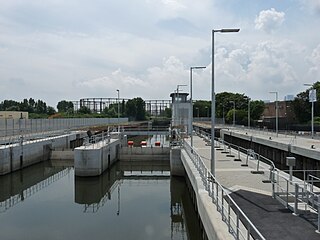
Bow Back Rivers or Stratford Back Rivers is a complex of waterways between Bow and Stratford in east London, England, which connect the River Lea to the River Thames. Starting in the twelfth century, works were carried out to drain Stratford Marshes and several of the waterways were constructed to power watermills. Bow Creek provided the final outfall to the Thames, and the other channels were called Abbey Creek, Channelsea River, City Mill River, Prescott Channel, Pudding Mill River, Saint Thomas Creek, Three Mills Back River, Three Mills Wall River and Waterworks River.

Waltham Abbey is a suburban market town in the Epping Forest District of Essex. Located on the Greenwich Meridian, between the River Lea in the west and Epping Forest in the east, the town is 14 miles from central London and lies on the outskirts of North East London, with the Metropolitan Green Belt to the north, east and south of the town. For statistical purposes, Waltham Abbey is included in the metropolitan area of London and the Greater London Urban Area.

Lee Valley Regional Park is a 10,000-acre (40 km2) 26 miles (42 km) long linear park, much of it green spaces, running through the northeast of Greater London, Essex and Hertfordshire from the River Thames to Ware, through areas such as Stratford, Clapton, Tottenham, Enfield, Walthamstow, Cheshunt, Broxbourne and Hoddesdon in an area generally known as the Lea Valley. Greater London's largest park, Lee Valley Park is more than four times the size of Richmond Park, extending beyond Greater London's borders into the neighbouring counties of Hertfordshire and Essex.

The River Ching is a tributary of the River Lea, flowing from Epping Forest, in southeast England.
The Lea Valley, the valley of the River Lea, has been used as a transport corridor, a source of sand and gravel, an industrial area, a water supply for London, and a recreational area. The London 2012 Summer Olympics were based in Stratford, in the Lower Lea Valley. It is very important for London's water supply, as the source of the water transported by the New River aqueduct, but also as the location for the Lee Valley Reservoir Chain, stretching from Enfield through Tottenham and Walthamstow.
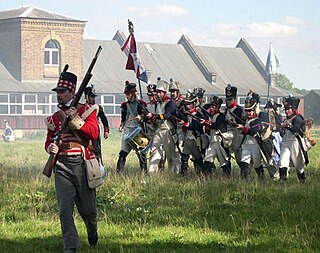
The Royal Gunpowder Mills are a former industrial site in Waltham Abbey, England. It was one of three Royal Gunpowder Mills in the United Kingdom. Waltham Abbey is the only site to have survived virtually intact.

The Lea Valley Walk is a 50-mile (80 km) long-distance path located between Leagrave, the source of the River Lea near Luton, and the Thames, at Limehouse Basin, Limehouse, east London. From its source much of the walk is rural. At Hertford the path follows the towpath of the River Lee Navigation, and it becomes increasingly urbanised as it approaches London. The walk was opened in 1993 and is waymarked throughout using a swan logo.

Cobbins Brook is a minor tributary of the River Lea. It forms to the north of Epping, Essex and flows past Epping Upland, Waltham Abbey until it joins the River Lee Flood Relief Channel below the M25 near Rammey Marsh.

The Small River Lea is a minor tributary of the River Lea, which flows through the Lee Valley Park between Cheshunt and Enfield Lock. It forms part of the Turnford and Cheshunt Pits Site of Special Scientific Interest (SSSI) as it flows through the River Lee Country Park.
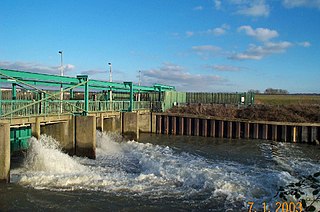
The Lee Flood Relief Channel (FRC) is located in the Lea Valley and flows between Ware, Hertfordshire, and Stratford, east London. Work started on the channel in 1947 following major flooding and it was fully operational by 1976. The channel incorporates existing watercourses, lakes, and new channels. Water from the channel feeds the Lee Valley Reservoir Chain.

Fishers Green is a settlement 1 mile (1.6 km) to the north of the town of Waltham Abbey, Essex, England, in the parish of Waltham Abbey. It lies on the flood plain of the River Lea.

The Lee Valley Reservoir Chain is located in the Lee Valley, and comprises 13 reservoirs that supply drinking water to London.

The Coppermill Stream is in the London Borough of Waltham Forest at Walthamstow in the Lea Valley. It is a minor tributary of the River Lea and approximately 2 miles (3.2 km) long. The stream is part of a Site of Metropolitan Importance.

Waltham Town Lock is a lock on the River Lee Navigation at Waltham Cross, Hertfordshire. The lock is located in the River Lee Country Park which is part of the Lee Valley Park. The adjoining Showground site now known as the Broxbourne White Water Canoe Centre has been chosen to host the canoeing event in the 2012 Summer Olympics.

The River Lee Country Park is located in the Lee Valley Park and is managed by the Lee Valley Regional Park Authority. Covering 1,000 acres (400 ha) on either side of the River Lee Navigation between Waltham Abbey and Broxbourne, it is an area of lakes, watercourses, open spaces and three Sites of Special Scientific Interest (SSSI) linked by footpaths and cycle tracks.
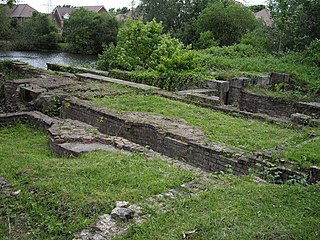
The Millhead Stream is a minor tributary of the River Lea in England. The stream flows north to south across the Waltham Abbey flood plain and through the site of the former Royal Gunpowder Mills.

The Cornmill Stream and Old River Lea is a 24.6 hectare biological Site of Special Scientific Interest in Waltham Abbey, Essex.

Waltham Abbey SSSI is a 34.2 hectare biological Site of Special Scientific Interest which is located within the Waltham Abbey Royal Gunpowder Mills at Waltham Abbey in Essex.